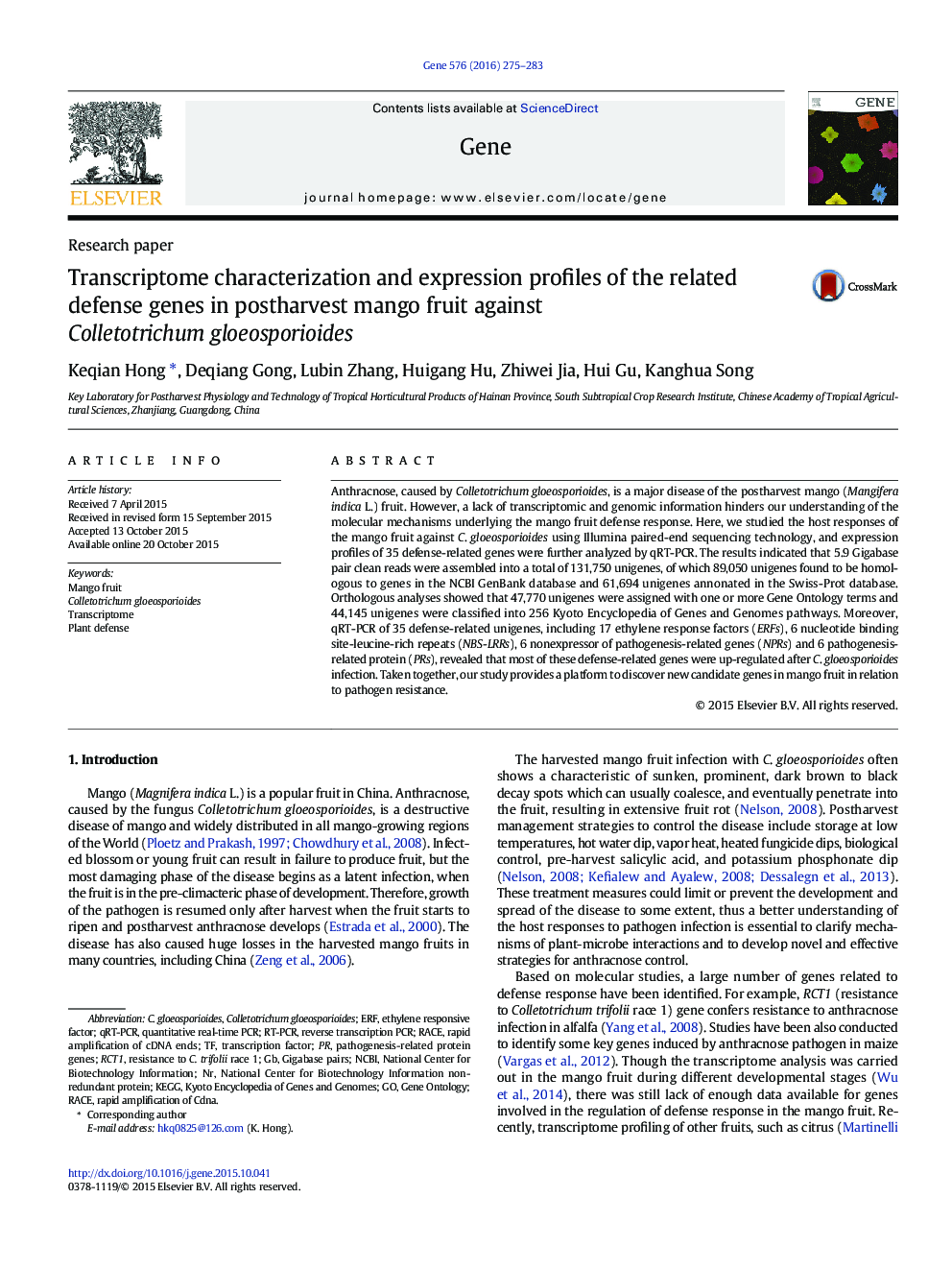| Article ID | Journal | Published Year | Pages | File Type |
|---|---|---|---|---|
| 2815260 | Gene | 2016 | 9 Pages |
•The annotated transcriptome of mango fruit in response to Colletotrichum gloeosporioides infection was obtained.•Unigenes encoding ERFs, NBS-LRRs, NPRs and PRs showed significant differential expression in infected fruits.•The study provides a platform to discover new candidate genes in mango fruit in relation to pathogen resistance.
Anthracnose, caused by Colletotrichum gloeosporioides, is a major disease of the postharvest mango (Mangifera indica L.) fruit. However, a lack of transcriptomic and genomic information hinders our understanding of the molecular mechanisms underlying the mango fruit defense response. Here, we studied the host responses of the mango fruit against C. gloeosporioides using Illumina paired-end sequencing technology, and expression profiles of 35 defense-related genes were further analyzed by qRT-PCR. The results indicated that 5.9 Gigabase pair clean reads were assembled into a total of 131,750 unigenes, of which 89,050 unigenes found to be homologous to genes in the NCBI GenBank database and 61,694 unigenes annonated in the Swiss-Prot database. Orthologous analyses showed that 47,770 unigenes were assigned with one or more Gene Ontology terms and 44,145 unigenes were classified into 256 Kyoto Encyclopedia of Genes and Genomes pathways. Moreover, qRT-PCR of 35 defense-related unigenes, including 17 ethylene response factors (ERFs), 6 nucleotide binding site-leucine-rich repeats (NBS-LRRs), 6 nonexpressor of pathogenesis-related genes (NPRs) and 6 pathogenesis-related protein (PRs), revealed that most of these defense-related genes were up-regulated after C. gloeosporioides infection. Taken together, our study provides a platform to discover new candidate genes in mango fruit in relation to pathogen resistance.
